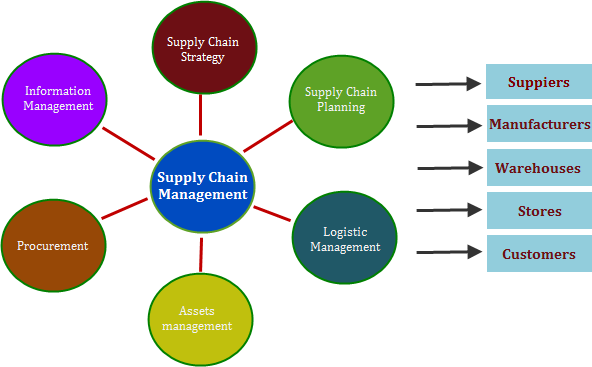In embracing a reflected blueprint, a company can save money and prevent a jam, because the in-demand product would not need to wait as long. This delineated supply chain strategy may become more obvious, however it’s not always easy to design a blueprint that’s efficient.
A robust supply chain is not an asset that is turned on and left to fend for itself. It must be continually monitored to ensure it is on the right course. In this article, I will share with you some tips to help you improve your supply chain: 1. Identify reliable suppliers.
Invest in Inventory Tracking
An easy first step to improve your supply chain is basic. Train your warehouse associates and logistics teams on standard operating procedures so they are doing all work consistently, efficiently and accurately.
Another important aspect of keeping records is keeping track of inventory. Stock doesn’t linger in a single location as it progresses through your system, so it’s important that you check and update inventory levels on a regular basis. This will allow you to spot mismatched deliveries and dips or spikes in sales, alongside sudden, often unexpected, costs.
These accurate record-keeping can also help with overall customer service. Knowing your inventory numbers down to the last item can encourage repeat buying as customers know you’ll be able to communicate with accuracy about exactly what is in stock, fostering loyal return clients, and helping them feel confident in ordering an item with the knowledge they’ll be able to come back for a satisfying replacements if something goes wrong. It might also make it easier to quickly action problems with a supplier as they come up, like making the switch to another partner if you see that supplies with one are consistently riddled with defects.
Automate Your Processes
In the case of the shop floor, software automation reduces the number of steps necessary for completion of a task, which allows employees to channel more of their time to value-added work; improves customer service; and decreases unit costs. The same applies to software tools to handle everything from accounting to product supply chains.
Secondly, automation allows businesses to react more quickly to market signals. It helps to keep inventories down and operating costs at a minimum, too. Finally, it can improve speed to market, automating tasks such as order processing, shipment tracking and fulfilment.
Automation can help supply chain leaders uncover inefficiencies and make strategic decisions, by bringing together data from different systems to deliver a single source of truth for the entire supply chain. It can accumulate error rates, such as product rejections and inventory discrepancies. It can assist a company to construct more robust, resilient supply chains by flagging when suppliers might run out of manufacturing capacity or simply be unable to generate a timely production or delivery, at which point the company can identify an alternate vendor. It can save money by decreasing energy consumption and lowering costs for transportation, storage and raw materials.
Build Strong Relationships With Your Suppliers
Suppliers are important to every business and, if you nurture a good relationship with them, you get flexibility and adaptability when things go wrong. For instance, if you have more demand than expected, then the better the relationship you have with the supplier, the more inclined they will be to change their schedules and meet the requirement.
Equally, good relations with suppliers can help your company reduce costs – by emboldening suppliers to be open with your team and by asking the supplier to train your people on appropriate aspects of their operations. Developing and implementing processes for ongoing supplier evaluation, and for refining processes in response to that evaluation, can lead to cost savings.
I feel it is useful to treat your suppliers as if they are a part of your business and it is important to be respectful but at the same time, be friendly with them and give them the fair and equal treatment. For example, if you are paying them on time, it will help build a great deal of trust.
Develop a Strategic Plan
If you conceive your supply chain strategy as though it were a compass, it won’t be fit to guide your business in the right direction over the longer term unless it is aligned with the wider business goals and priorities.
This includes efficiency, generate (flexibility and mitigating risk – for instance, supply from countries of low production cost, make use of sustainable suppliers to support business sustainability, build contingency plan for suppliers in political high-risk area and so on.
It is also vital to communicate your strategic plan across the company so that they have a clear understanding of their responsibilities and against what targets they are supposed to operate. This is a great way to create accountability and get employees’ buy-in. It’s also a great way to track your progress and identify corrective actions that are needed. To do that you should ensure that you have a system in place to keep all your operational data recorded and tracked. It will help you understand whether your supply chain is on target declaring its objectives and how to improve against your KPI next time.

